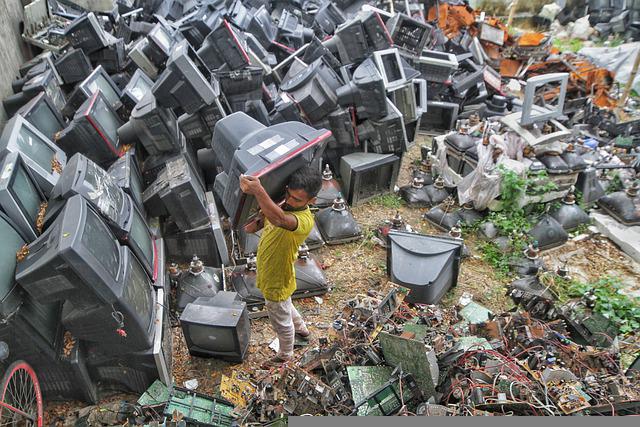Due to the rapid advancement of technology, planned obsolescence, and the proliferation of different media and storage types (such as cassettes, CDs, HDs, SSDs, etc.), the global production of e-waste has increased dramatically in recent years. E-waste is now the fastest-growing waste stream in the world because of the increasing availability and usage of electronic devices.
Any electronic equipment that has reached its end of life is referred to as “e-waste”. As a result, many “e-waste” goods are in reality not, as outdated electronics that are no longer desired but still functional and may be given, repurposed, or repaired.
What Is the Significance of Ewaste Collection?
It’s crucial to understand why ewaste collection is recycled before looking at the process of doing so. In addition to reducing the environmental harm caused by garbage, ewaste collection also has a variety of positive effects, mostly via the preservation of resources.
Businesses of all sizes are being urged to take more responsibility for their e-waste products by local governments across the globe. As a result, customers now have additional options for recycling (or reusing) ewaste collection items thanks to producer responsibility.
Ewaste collection is now falling behind our use, making large-scale recycling of ewaste collection essential. We shall soon be surrounded by malfunctioning gadgets if we do not enhance our management methods.
The Advantages of Reusing Electronic Trash
Recycling ewaste collection, on the other hand, enables the recovery of many resources, including gold, copper, glass, aluminum, lithium, plastic, and many more. E-waste contains raw materials worth an estimated $80 billion in 2016, according to one research.
These recycled components are then used to make new goods, lowering the environmental impact and eliminating dangerous materials from being dumped into the environment, all of which contribute to a more sustainable supply chain.
The recycling process of electronic waste
Collection
Recycling bins, collection sites, take-back programs, or on-demand collection services are the initial steps in the e-waste recycling process. Recycling facilities for electronic garbage receive the combined ewaste collection.
Electronic trash should be segregated into distinct bins or boxes according to kind at this stage of the process, as recommended by best practices. Batteries containing e-waste need particular treatment and may be exceedingly harmful if combined with other rubbish. This is especially critical for those batteries.
Storage
Despite the fact that safe storage may seem insignificant, it may be really crucial. CRT TVs and monitors, for example, have glass displays that have been heavily polluted with lead. A lot of this glass was formerly used to make new computer displays; however, as new technologies have emerged and as consumer demand for CRT goods has decreased, it is now just sitting around.
Shredding and Sorting by Hand
Manual sorting of ewaste collection begins with the removal of different materials (such as batteries and bulbs) for processing. Some products may be physically deconstructed at this point in order to recover precious materials, repurpose them, or utilize the components.
The shredded ewaste collection is then used to accurately sort the materials, which is an important step in the process. The majority of electronic components are made up of a variety of different materials, and by disassembling them into smaller parts, it is possible to mechanically separate them.
Extraction by Use of Mechanical Means
Distinct procedures follow one another to complete the mechanical separation of different materials. Magnetic separation and water separation are the two most important phases.
Recovery
For sale and reuse, the materials have been separated. Plastics and steel are two examples of commodities that may have to join another recycling stream. Others may be treated on-site and sold alongside useable components that have been isolated earlier in the process.
You may also like
-
The Revolution in Hair Care: Exploring Advanced Shiseido Straightening Techniques
-
Exploring the Technological Leap in Secure Printing with the Sigma DS2
-
Unwrapping the Tale: Bongs and Their History Throughout Time
-
Navigating the Threads of Sustainability: A Closer Look at Nightwear Choices
-
Capture the Moment: Photography Tips with Whale Spotting Adventures in Bremer Bay

